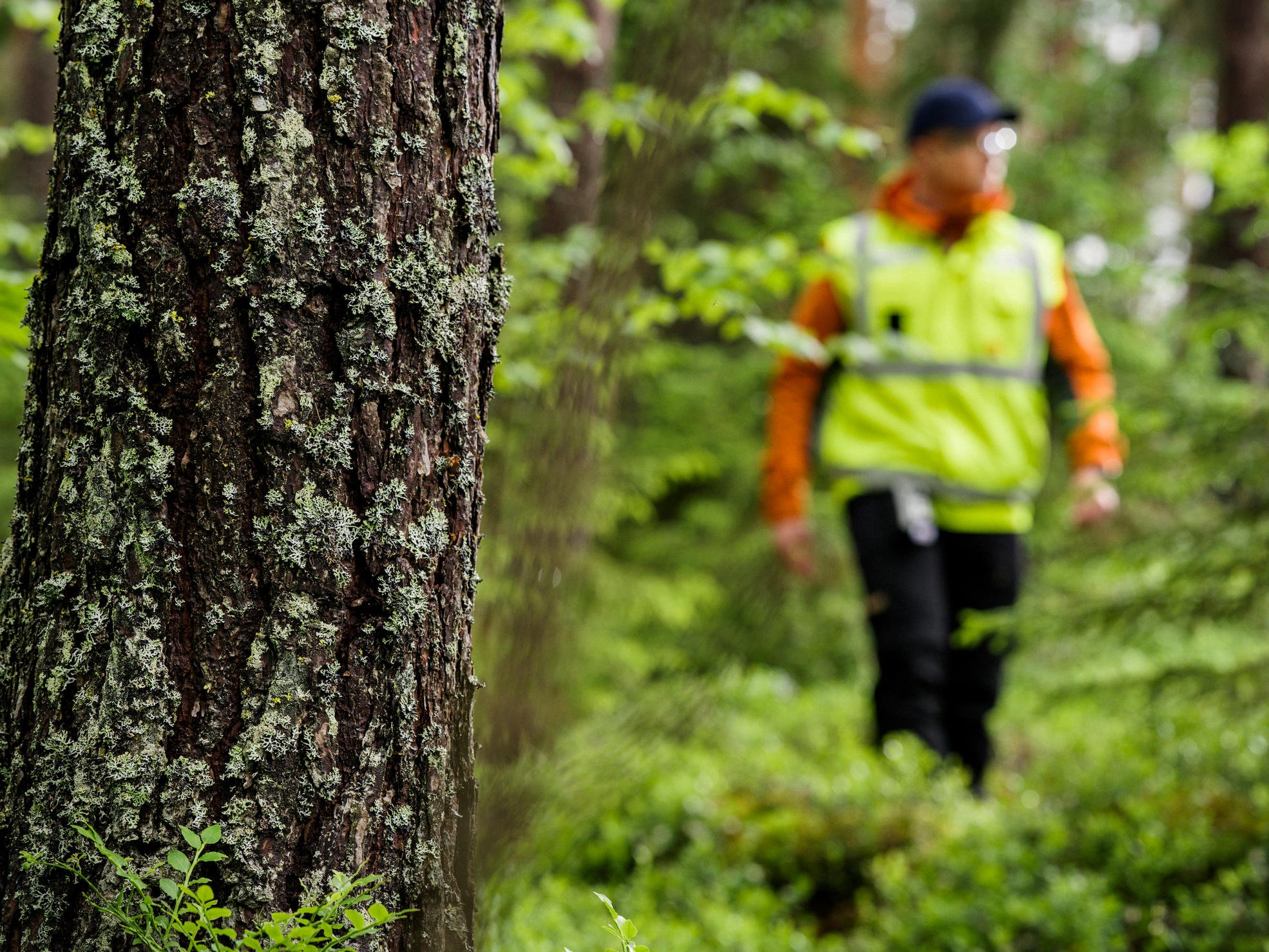What is essential is the quality and volume of the trees. Our forest specialist evaluates the average volume and quality of trees. We use the result to determine a price for each tree species on the felling site.
The forest specialist provides the forest owner with an estimate of the average volume of the trunks to be felled, as well as the price paid for one cubic metre per tree species.
The price varies depending on the volume of wood removed
In connection with wood trade, the forest owner also gets a chart indicating how the price per cubic metre for different tree species changes if the average volume deviates from the estimate. If the price is lower than the estimate, the removed trees were smaller than expected. If the price is higher than the estimate, the removed trees were larger than expected.
The harvester measures and cuts the trees, and the measurement data are used to determine the volume of each felled trunk. Based on this, the average volume is calculated separately for the removed pine and spruce trunks. This gives the volume-based price for each tree species, as well as the value of wood trade.
The thinning method affects the value of the wood removed
The most common thinning method is to remove trees of a poor quality and with weak growth to leave the best trees more space to grow into sturdy log wood. If sturdier trees are removed in felling, or if thinning from above is applied, a higher price will be paid for the wood. The price based on volume is fair to both the seller and the buyer.
Interested? Request a quote on wood trade. In your message, indicate that you are interested in pricing based on stem volume.

